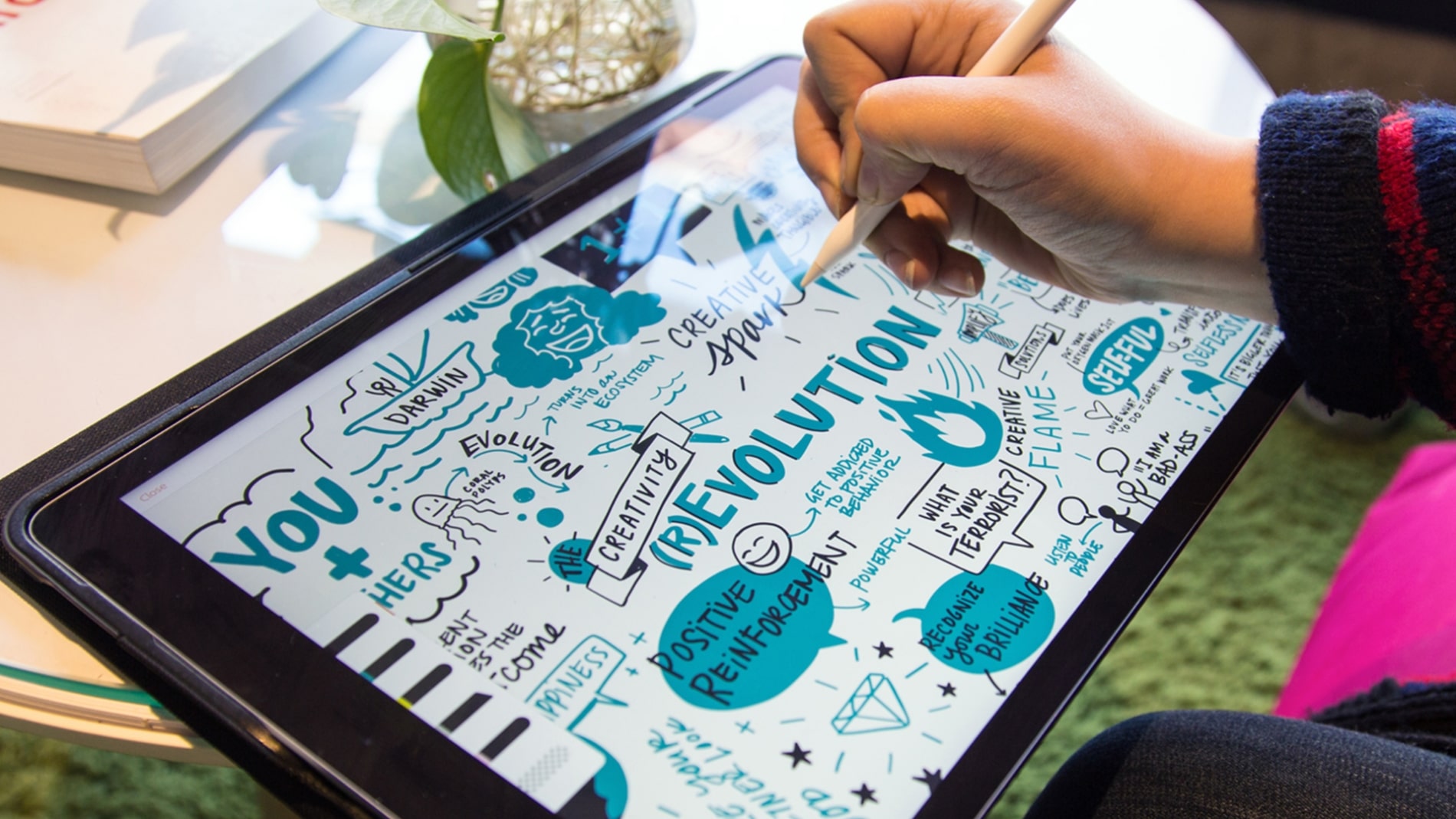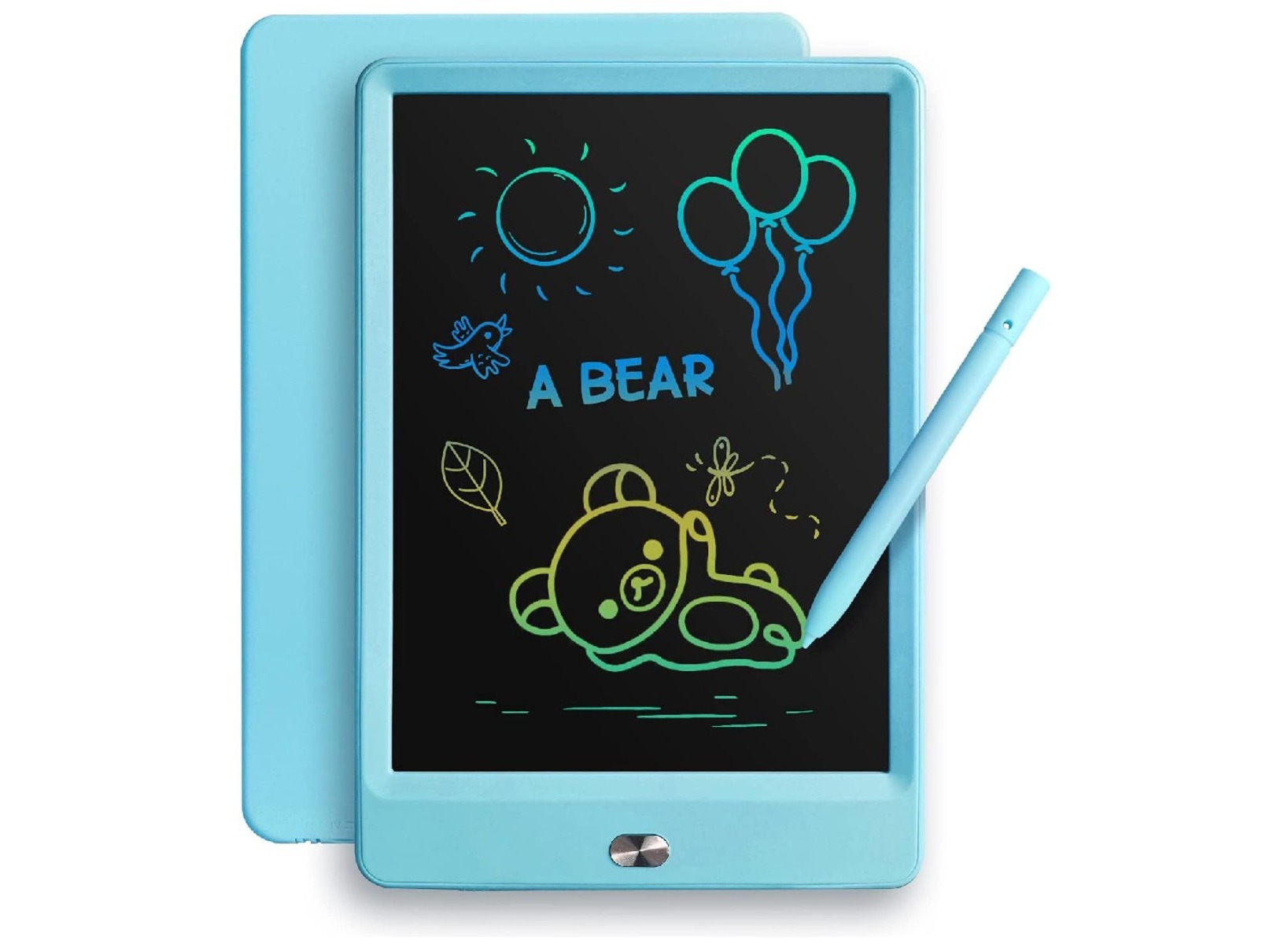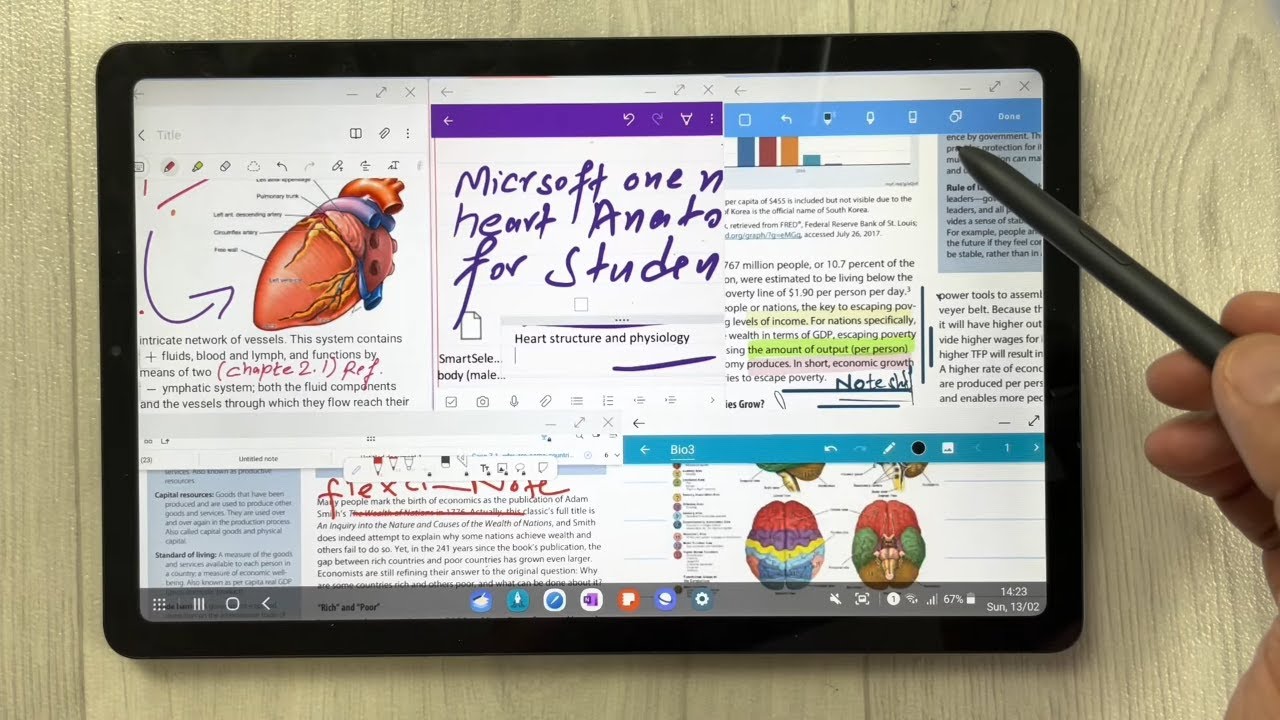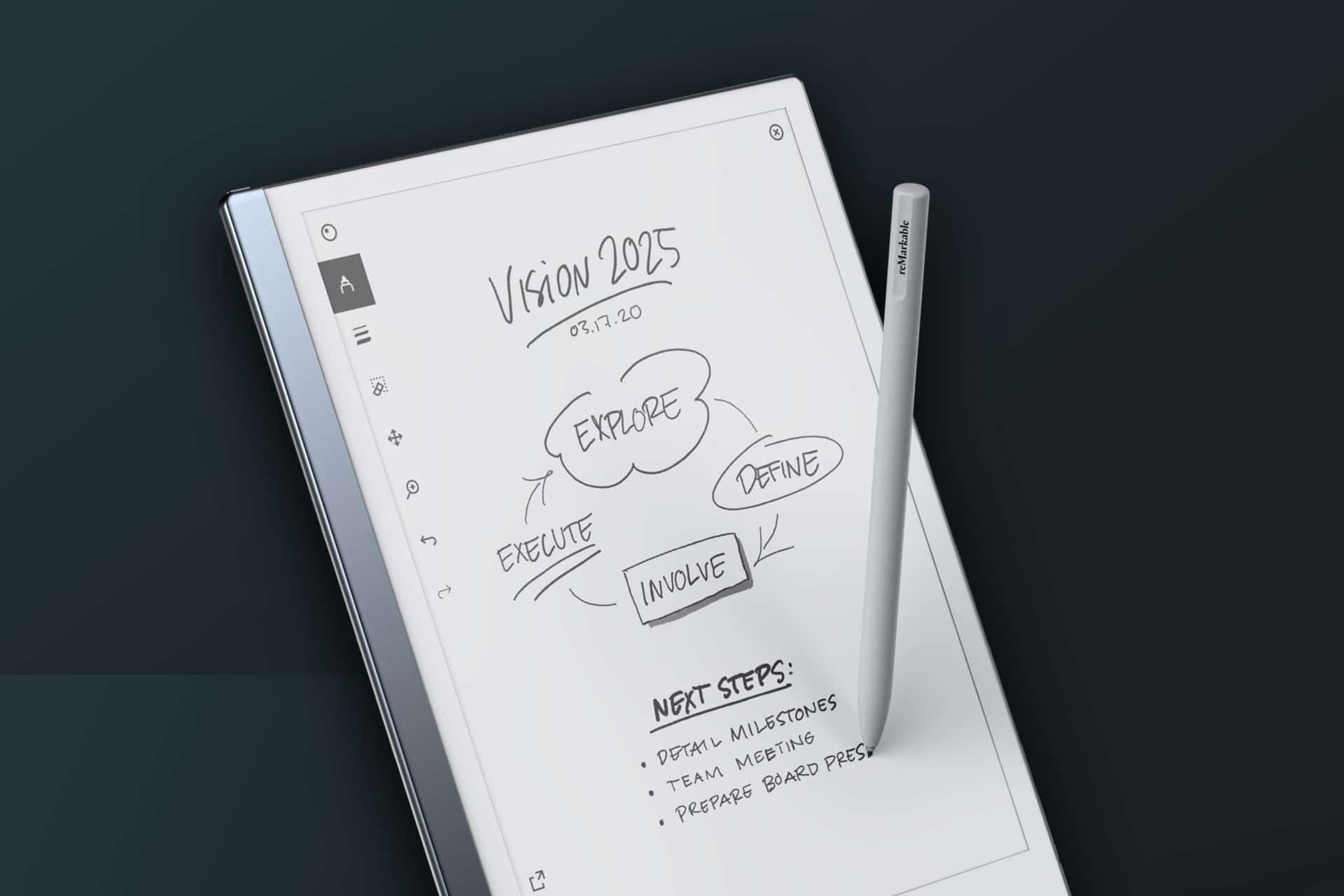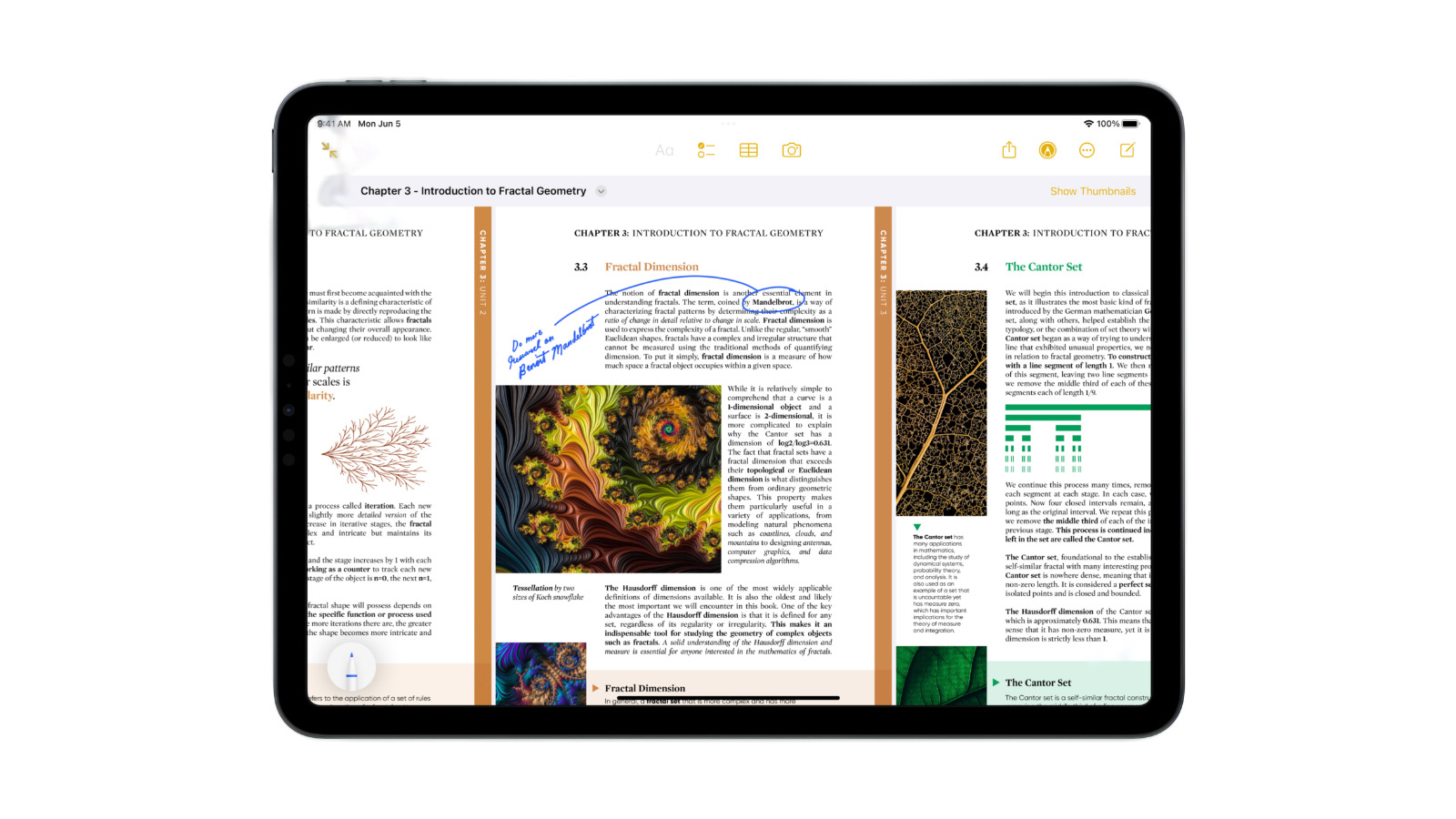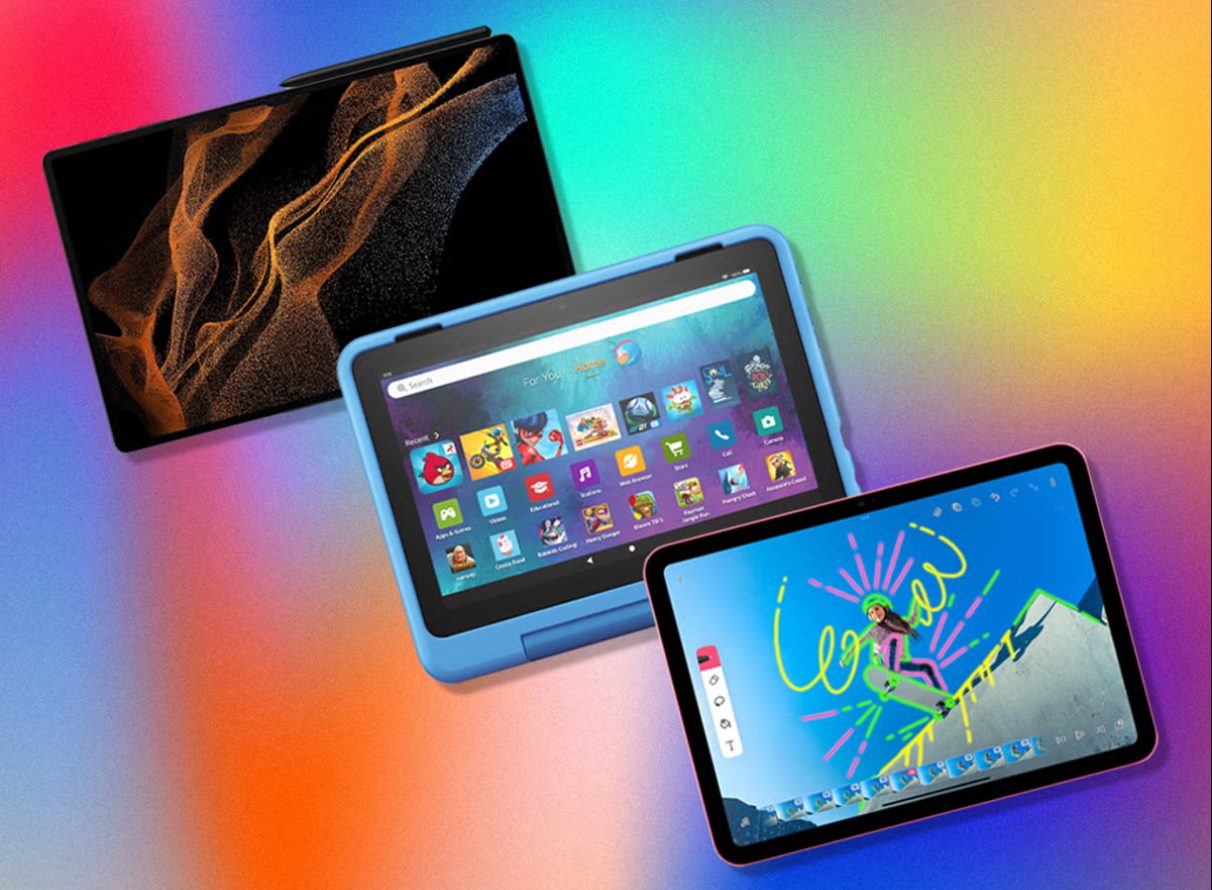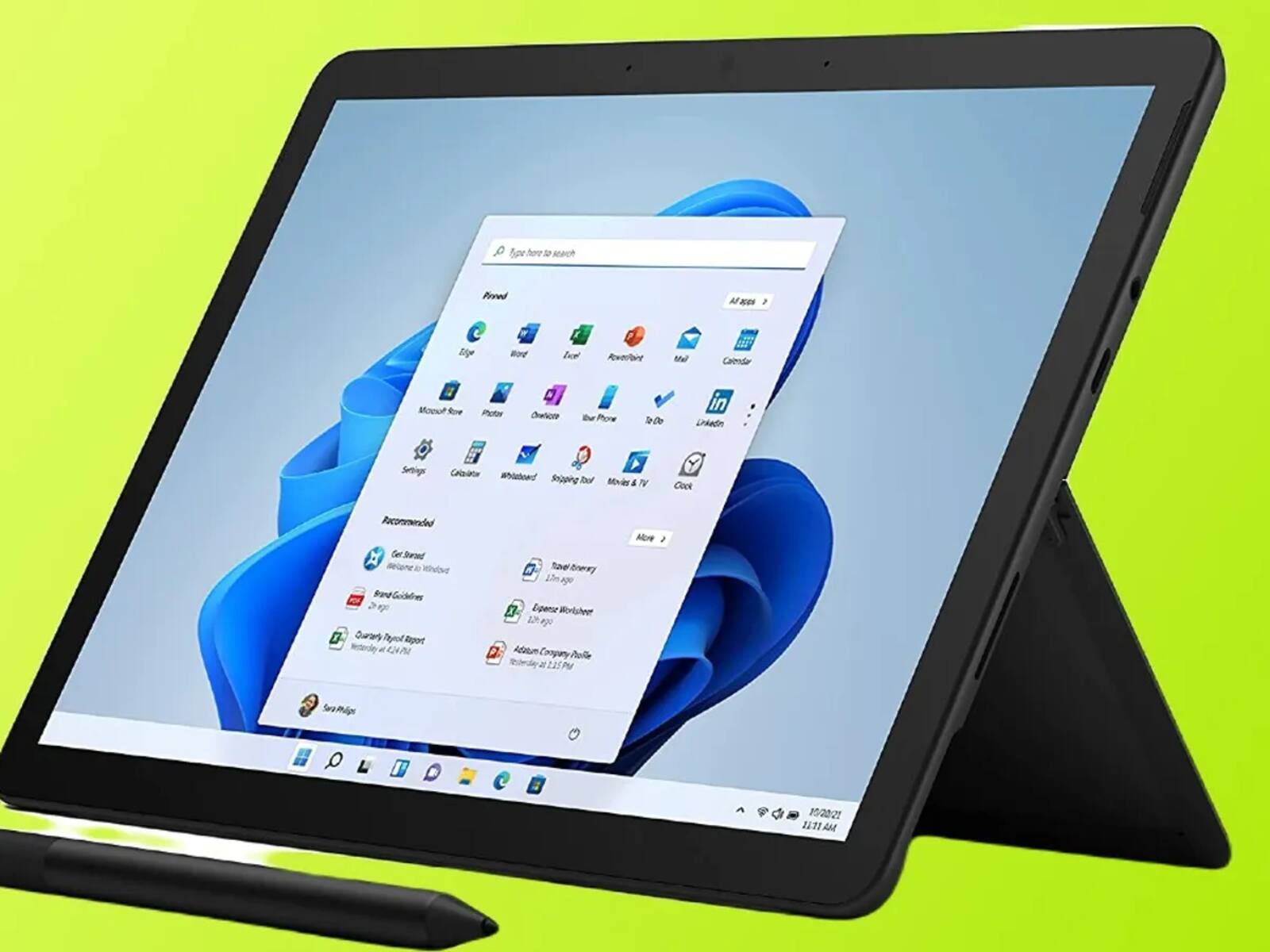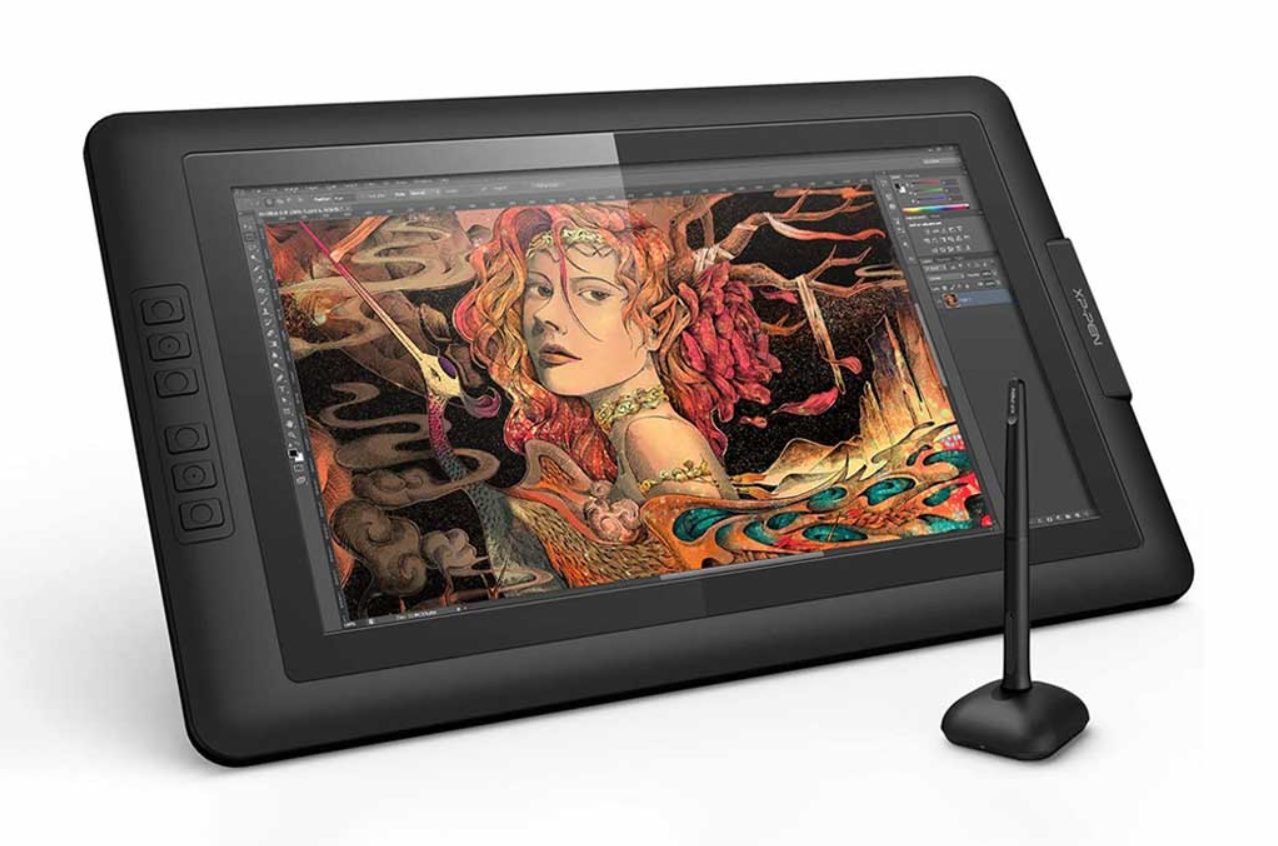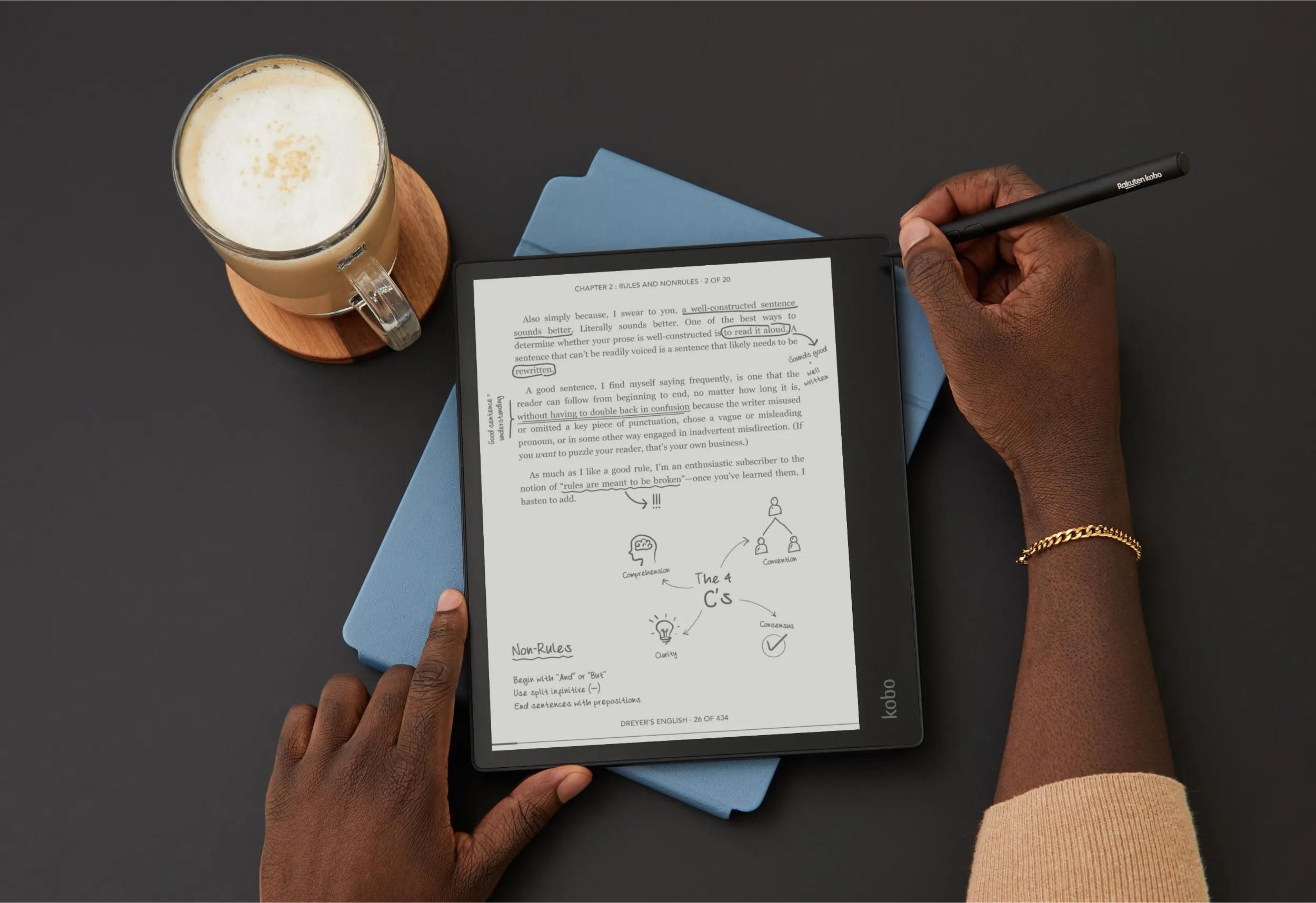Introduction
In today’s digital age, the traditional method of taking handwritten notes on paper is being replaced by more modern and efficient alternatives. One such alternative is using a tablet for writing notes. Tablets offer a plethora of benefits that make them a popular choice among students, professionals, and creatives alike.
The convenience and portability of tablets make them an ideal tool for jotting down ideas, capturing important information, and organizing thoughts. With the help of specialized note-taking apps and stylus pens, tablets offer a seamless experience that closely mimics the feeling of writing on paper.
Furthermore, tablets provide a range of additional features that enhance the note-taking experience. From the ability to easily edit and format notes, to syncing them across multiple devices for seamless access, tablets offer a level of flexibility and convenience that traditional notebooks simply cannot match.
Another key advantage of using a tablet for writing notes is the ability to easily search and organize your notes. With the ability to tag, categorize, and search through your digital notes, finding specific information becomes a breeze. No more flipping through pages of handwritten notes and struggling to find that one crucial detail.
Moreover, tablets offer a wide range of options for customization and personalization. From choosing different paper styles and colors to utilizing different pen types and colors, you have the freedom to tailor your note-taking experience to your preferences.
Whether you are a student looking to streamline your studying, a professional seeking a more efficient way to take meeting notes, or a creative professional wanting to capture and organize your ideas on the go, using a tablet for writing notes can greatly enhance your productivity and organization.
In the following sections, we will explore the various factors to consider when choosing a tablet for writing notes, and delve into some of the best tablets available on the market today.
The Benefits of Using a Tablet for Writing Notes
Using a tablet for writing notes offers a multitude of benefits that can greatly improve your note-taking experience. Here are some of the key advantages:
1. Portability and Convenience: Tablets are lightweight and compact, making them easy to carry around wherever you go. Whether you’re attending classes, meetings, or traveling, having a tablet allows you to have all your notes at your fingertips.
2. Digitally Enhanced Note-Taking: With a tablet, you can take your handwritten notes to the next level using specialized note-taking apps. These apps offer features such as text recognition, handwriting-to-text conversion, and the ability to insert images and audio recordings into your notes.
3. Organization and Searchability: Paper notes can easily get lost or become disorganized. Tablets, on the other hand, allow you to easily organize, categorize, and search through your notes. You can create folders, add tags, and quickly find specific information with just a few taps.
4. Flexibility in Editing: Tablets offer the advantage of easy editing and formatting options. With just a few swipes and taps, you can rearrange your notes, change the color or style of your handwriting, and even insert additional content into your existing notes.
5. Syncing Across Devices: Tablets provide seamless synchronization with other devices. This means that you can start taking notes on your tablet and continue working on them later on your laptop or desktop computer, ensuring that your notes are always up to date.
6. Environmentally Friendly: By opting for digital note-taking on a tablet, you contribute to saving paper and reducing waste. This eco-friendly approach allows you to play your part in conserving the environment.
7. Cost-Effective: While the initial investment in a tablet may seem significant, over time, using a tablet for writing notes can save you money on purchasing notebooks, pens, and other stationery supplies.
Overall, using a tablet for writing notes offers unparalleled convenience, flexibility, and organization. Whether you’re a student, professional, or creative, embracing this digital solution can greatly enhance your productivity and streamline your note-taking process.
Factors to Consider When Choosing a Tablet for Writing Notes
When it comes to selecting a tablet for writing notes, there are several important factors to take into consideration. Each individual has unique preferences and requirements, so it’s crucial to keep these factors in mind to make an informed decision. Here are some key considerations:
1. Stylus/Pen Support: Look for a tablet that offers stylus or pen support. This allows for a more natural handwriting experience and precise input when writing or drawing. Consider tablets that come with a dedicated stylus or those that have compatibility with popular stylus options.
2. Screen Size and Resolution: The screen size and resolution of the tablet are essential for a comfortable note-taking experience. A larger screen offers more space for writing and viewing notes, while a higher resolution ensures sharp and clear text and images.
3. Battery Life: Opt for a tablet that offers long battery life. This ensures that your tablet will last throughout your busy day without needing frequent charging interruptions. Look for tablets with a battery life of at least 8-10 hours for uninterrupted note-taking.
4. Note-Taking Apps: Consider the availability and functionality of note-taking apps on the tablet’s operating system. Look for apps that offer features such as handwriting recognition, synchronization across devices, and easy organization of notes.
5. Storage Capacity: Depending on the volume of notes and additional files you plan to store, consider a tablet with ample storage capacity. Look for expandable storage options or tablets with larger built-in storage to accommodate your needs.
6. Operating System: Choose a tablet with an operating system that suits your preferences and integrates with your existing devices. Options such as iOS, Android, and Windows each have their own advantages and app ecosystems, so consider which one aligns best with your workflow.
7. Durability: If you plan to use your tablet for note-taking on the go, durability is essential. Look for tablets that are built to withstand everyday wear and tear, with features like scratch-resistant screens and sturdy construction.
8. Price: Determine your budget before selecting a tablet. Consider the features and specifications you prioritize the most and find a balance between affordability and functionality.
9. Reviews and Recommendations: Read reviews and seek recommendations from trusted sources or users who have experience with the tablets you are considering. Their insights can provide valuable information and help you make an informed decision.
By considering these factors, you can narrow down your options and find a tablet that aligns with your specific needs and preferences. Taking the time to evaluate your requirements will ensure that you make the right choice and enjoy a seamless and enjoyable note-taking experience.
The Best Tablets for Writing Notes
When it comes to choosing the best tablet for writing notes, there are several top contenders that excel in performance, functionality, and note-taking capabilities. Here are five of the best tablets available on the market today:
1. iPad Pro: The iPad Pro is known for its powerful performance and exceptional stylus support with the Apple Pencil. Its large Retina display, smooth handwriting recognition, and a wide range of note-taking apps make it an excellent choice for digital note-taking.
2. Samsung Galaxy Tab S7+: The Samsung Galaxy Tab S7+ boasts a stunning Super AMOLED display and comes with the highly responsive S Pen. Its slim design, pressure sensitivity, and efficient multitasking capabilities make it a favorite among note-takers and creatives.
3. Microsoft Surface Pro: The Microsoft Surface Pro combines the portability of a tablet with the power of a laptop. With the Surface Pen and excellent note-taking apps like OneNote, this versatile device offers a seamless note-taking experience and the convenience of a removable keyboard.
4. Google Pixelbook Go: The Google Pixelbook Go is a lightweight and highly portable option for note-taking. It offers a responsive touch screen and supports the use of stylus pens. With the robust Google ecosystem and the ability to run Android apps, it’s a great choice for those invested in the Google ecosystem.
5. Lenovo Yoga Book C930: The Lenovo Yoga Book C930 is a unique tablet that comes with a virtual keyboard and a secondary E Ink display that can be used for note-taking and sketching. Its versatility, slim design, and included stylus make it an excellent choice for those who enjoy handwriting in a digital format.
These tablets offer a range of features and capabilities that cater to different preferences and budgets. It’s important to weigh factors such as stylus compatibility, display quality, and overall performance when making your decision.
Remember to consider your specific needs, such as the intended use for note-taking, the desired level of customization and organization, and the integration with your existing devices and apps. Doing thorough research and perhaps even testing out different tablets in person will ensure that you find the best tablet for your note-taking needs.
iPad Pro
The iPad Pro has solidified its position as one of the best tablets for writing notes, thanks to its remarkable performance and compatibility with the Apple Pencil. With its sleek design and powerful hardware, the iPad Pro offers a superior note-taking experience.
The iPad Pro’s standout feature is its support for the Apple Pencil. This stylus is highly responsive and provides exceptional precision, making it feel like you’re writing on paper. The iPad Pro’s ProMotion technology ensures a smooth and lag-free writing experience, whether you’re annotating documents, sketching, or jotting down notes.
Moreover, the iPad Pro is equipped with a stunning Retina display, offering vibrant colors and excellent clarity. The True Tone feature dynamically adjusts the screen’s color temperature to match the ambient lighting, providing a more comfortable viewing experience during extended note-taking sessions.
One of the primary advantages of using an iPad Pro for writing notes is the extensive range of note-taking apps available in the App Store. Apple’s built-in Notes app provides a comprehensive set of tools for creating and organizing notes, including text formatting options, sketching capabilities, and the ability to add photos and scanned documents. Additionally, popular third-party apps such as GoodNotes, Notability, and Evernote offer advanced features like handwriting recognition and audio recording integration.
The iPad Pro also boasts powerful processing capabilities, making it suitable for multitasking and handling resource-intensive note-taking apps. Whether you’re simultaneously working with PDFs, browsing the web for research, or using split-screen mode to reference multiple documents, the iPad Pro can handle it all with ease.
In terms of storage options, the iPad Pro offers a range of configurations to suit your needs. From 128GB to a whopping 1TB of storage, you can choose the capacity that best fits your note-taking requirements, allowing you to store a vast library of notes, documents, and media.
To enhance productivity, the iPad Pro seamlessly integrates with other Apple devices and services. With iCloud, you can effortlessly sync your notes across all your Apple devices, ensuring that your content is always up to date. The Handoff feature allows you to seamlessly transition from taking notes on the iPad Pro to editing them on your Mac or iPhone without interruption.
While the iPad Pro is renowned for its performance and exceptional note-taking capabilities, it comes at a higher price point compared to other tablets. However, if you prioritize a premium writing experience, the iPad Pro is worth the investment.
Overall, the iPad Pro offers an unmatched combination of powerful hardware, excellent stylus support, and a wide array of note-taking apps. Whether you’re a student, professional, or creative individual, the iPad Pro is a top contender for anyone seeking a tablet for writing notes.
Samsung Galaxy Tab S7+
The Samsung Galaxy Tab S7+ is a premium tablet that stands out for its stunning Super AMOLED display, powerful performance, and seamless integration with the included S Pen. With its exceptional note-taking capabilities, the Galaxy Tab S7+ is an excellent choice for those who prioritize a high-quality writing experience.
The Galaxy Tab S7+ features a large 12.4-inch Super AMOLED display, which offers rich colors, deep blacks, and sharp details. This display not only enhances the visual experience but also provides a smooth and responsive touch response, perfect for precise note-taking with the S Pen.
The included S Pen is an integral part of the Galaxy Tab S7+ experience. With its 9ms latency and 4,096 levels of pressure sensitivity, the S Pen feels incredibly natural and allows for precise and detailed input. Whether you’re sketching, handwriting, or annotating documents, the S Pen offers a seamless and enjoyable writing experience.
One of the standout features of the Galaxy Tab S7+ is its multitasking capabilities. With its powerful Snapdragon 865 Plus processor and up to 8GB of RAM, this tablet can handle running multiple note-taking apps simultaneously or even split-screen with other applications. This allows you to have your reference materials, web browser, or other tools readily available while taking notes.
The Galaxy Tab S7+ also offers remarkable battery life, lasting up to 14 hours on a single charge. This extended battery life ensures that you can use the tablet extensively for note-taking without worrying about running out of power.
In terms of software, the Galaxy Tab S7+ runs on Android and comes with Samsung’s One UI interface. This interface is specifically optimized for tablets, providing a user-friendly experience and allowing for seamless navigation between apps and multitasking features.
With the Samsung Notes app pre-installed, the Galaxy Tab S7+ offers robust note-taking capabilities out of the box. This app supports various input methods, including handwriting, typing, shapes, and voice recordings. It also includes features such as handwriting-to-text conversion, organization options, and the ability to export notes to different file formats.
Additionally, the Galaxy Tab S7+ supports integration with other popular note-taking apps from the Google Play Store, such as Noteshelf, Evernote, and Microsoft OneNote, giving you more options to customize your note-taking experience.
While the Samsung Galaxy Tab S7+ is a high-end tablet, it provides exceptional value for its features and performance. The combination of its stunning display, powerful hardware, exceptional S Pen functionality, and multitasking capabilities make it an excellent choice for those looking for a top-tier tablet for writing notes.
Overall, the Samsung Galaxy Tab S7+ offers a premium note-taking experience, with its stunning display, powerful hardware, and seamless integration with the S Pen. Whether you’re a student, professional, or creative individual, the Galaxy Tab S7+ is a top contender for those seeking a tablet optimized for writing and productivity.
Microsoft Surface Pro
The Microsoft Surface Pro is a versatile tablet that combines the portability of a tablet with the functionality of a laptop, making it an excellent choice for those who require a device for both writing notes and other productivity tasks. With its powerful hardware and compatibility with the Surface Pen, the Surface Pro offers a seamless and efficient note-taking experience.
The Surface Pro boasts a high-resolution PixelSense display, which provides crisp and vibrant visuals. The 12.3-inch screen offers ample space for writing and viewing notes, while the 3:2 aspect ratio provides a more natural writing experience. The touch screen is highly responsive, allowing for precise input when using the Surface Pen.
The Surface Pen is an essential accessory that greatly enhances the note-taking capabilities of the Microsoft Surface Pro. With 4,096 levels of pressure sensitivity, the Surface Pen offers excellent precision and responsiveness, making writing and sketching on the tablet feel incredibly natural. The pen also supports tilt shading, allowing for a more expressive and artistic writing experience.
One of the key advantages of the Surface Pro is its ability to run the full Windows operating system. This means you have access to a wide range of note-taking apps, such as Microsoft OneNote and Evernote, as well as other productivity software like Microsoft Office. The familiarity and versatility of Windows make the Surface Pro a great choice for those who require a seamless integration with desktop software.
Furthermore, the Surface Pro offers excellent performance thanks to its powerful processors and up to 16GB of RAM. This ensures smooth multitasking and the ability to handle resource-intensive note-taking apps, allowing you to work efficiently without any slowdowns or lag.
In terms of storage, the Surface Pro offers various options, ranging from 128GB to 1TB, allowing you to choose the capacity that suits your note-taking needs. Additionally, the tablet also supports expandable storage via a microSD card slot, providing even more flexibility for storing and accessing your notes and files.
The Surface Pro features a built-in kickstand, allowing you to adjust the viewing angle to your preference. Whether you prefer to use the tablet in laptop mode with the attachable Type Cover or in tablet mode with the kickstand, the Surface Pro offers versatility and adaptability to suit your workflow.
Another advantage of the Surface Pro is its connectivity options. With USB ports, a microSD card slot, and a dedicated Surface Connect port, you have the ability to connect external storage devices, peripherals, and displays, further expanding the capabilities of the tablet for your note-taking needs.
While the Surface Pro is a bit heavier compared to other tablets on the market, it compensates with its powerful performance and laptop-like functionality, making it the preferred choice for those who require a tablet that can double as a laptop.
In summary, the Microsoft Surface Pro offers an excellent note-taking experience with its high-resolution display, responsive Surface Pen, and compatibility with the Windows operating system. Whether you’re a student, professional, or creative individual, the Surface Pro is a versatile and capable tablet that can fulfill all your note-taking requirements with ease.
Google Pixelbook Go
The Google Pixelbook Go is a lightweight and highly portable option for writing notes. With its sleek design, responsive touch screen, and compatibility with stylus pens, the Pixelbook Go offers a convenient and efficient note-taking experience for users on the go.
The Pixelbook Go features a 13.3-inch touchscreen display with vibrant colors and sharp details. The touch responsiveness is excellent, allowing for precise input with the use of a stylus pen. Whether you’re jotting down quick notes or sketching diagrams, the Pixelbook Go provides a smooth and natural writing experience.
While the Pixelbook Go does not come with a dedicated stylus like other tablets on this list, it supports the use of third-party stylus pens that can be purchased separately. This makes it a versatile option, allowing you to choose a stylus that suits your preference and writing style.
This Chromebook also runs on Chrome OS, which provides seamless integration with other Google services and apps. Google Drive and Google Docs serve as a powerful ecosystem for organizing and accessing your notes across devices, ensuring that your work is always in sync and easily accessible.
The Pixelbook Go is powered by Intel processors, providing smooth performance for multitasking and running note-taking apps. With up to 16GB of RAM, this Chromebook can handle running multiple apps simultaneously without any lag or slowdowns.
In terms of battery life, the Pixelbook Go excels with its impressive longevity. It can last up to 12 hours on a single charge, allowing you to use it throughout the day for note-taking without needing to worry about running out of battery power.
The keyboard on the Pixelbook Go is highly praised for its comfortable typing experience, making it a great option for users who prefer to type their notes. The backlit keyboard allows for easy typing even in low-light environments, ensuring that you can effectively work on your notes in any setting.
The Pixelbook Go also stands out for its lightweight and durable design. Weighing under 2.5 pounds, it’s easy to carry around in your bag, making it ideal for students or professionals who need a portable device for note-taking. The matte-finish exterior provides a secure grip, and the device is built to endure everyday use.
Despite not having a stylus included, the Google Pixelbook Go offers solid performance, a responsive touch screen, and the compatibility to use third-party stylus pens. With its lightweight design and long battery life, it’s an excellent choice for those who value portability and the Google ecosystem for their note-taking needs.
Lenovo Yoga Book C930
The Lenovo Yoga Book C930 is a unique and innovative tablet that offers a distinct note-taking experience. With its dual display design and integration of the E Ink panel for note-taking, the Yoga Book C930 is a standout choice for those who enjoy the versatility of handwriting in a digital format.
The Yoga Book C930 features a 10.8-inch QHD touchscreen display on the main panel, providing a vibrant and responsive display for viewing and interacting with your notes. The touch screen is highly sensitive and supports multi-touch gestures, making it easy to navigate through your notes and utilize various note-taking apps.
What sets the Yoga Book C930 apart from other tablets is its secondary E Ink display. This display can be transformed into a virtual keyboard or a note-taking panel, providing a realistic writing experience when using the included stylus pen. The E Ink display utilizes electromagnetic resonance (EMR) technology, making the writing experience feel smooth and natural.
The included stylus pen offers precision and accuracy when writing or drawing on the E Ink display. With the pen’s 4,096 levels of pressure sensitivity, you can create lines of varying thickness and apply shading for a more realistic and artistic note-taking experience.
In addition to note-taking, the E Ink panel can also be utilized as an e-reader, allowing you to read books, articles, and documents in a comfortable and paper-like environment. This makes the Yoga Book C930 a versatile device for both productivity and leisure reading.
The Yoga Book C930 runs on Windows 10, providing a familiar and comprehensive operating system for note-taking. You have access to a wide range of note-taking apps from the Microsoft Store, including OneNote and Evernote, which offer excellent organization and synchronization features for managing your notes.
With its Intel processor and up to 8GB of RAM, the Yoga Book C930 offers reliable performance for running note-taking apps and multitasking. The tablet also includes a generous storage capacity, allowing you to store a large number of notes and files directly on the device.
Despite its unique design and functionality, the Yoga Book C930 remains thin and lightweight, making it easy to carry around. The premium build quality and durable hinge ensure that the tablet can withstand the rigors of daily use.
While the Lenovo Yoga Book C930 may have a learning curve associated with adapting to the E Ink display, it’s an excellent choice for those who prefer the tactile experience of handwriting. With its versatile dual display design and included stylus pen, the Yoga Book C930 opens up new possibilities for digital note-taking and creativity.
Comparison of Tablets for Writing Notes
When comparing tablets for writing notes, it’s important to consider various factors to determine which device best suits your needs and preferences. Here, we outline the key features and differences among the tablets discussed in this article:
iPad Pro: The iPad Pro offers exceptional stylus support with the Apple Pencil, a vibrant Retina display, and a wide range of note-taking apps available on iOS. Its seamless integration with other Apple devices and the extensive customization options make it a top choice for Apple enthusiasts.
Samsung Galaxy Tab S7+: The Galaxy Tab S7+ stands out with its stunning Super AMOLED display, S Pen compatibility, powerful performance, and seamless multitasking capabilities. It is an excellent choice for users who value a versatile device with a vibrant display.
Microsoft Surface Pro: The Surface Pro combines the portability of a tablet with the functionality of a laptop. It offers excellent stylus support, a wide range of note-taking apps, and the versatility to run Windows applications. Its keyboard, powerful performance, and laptop functionality make it a great choice for those who need a hybrid device.
Google Pixelbook Go: The Pixelbook Go is a lightweight and highly portable option with a responsive touch screen and compatibility with third-party stylus pens. It offers seamless integration with Google services and apps, making it ideal for users invested in the Google ecosystem.
Lenovo Yoga Book C930: The Yoga Book C930 offers a unique dual-display design, with an E Ink panel for note-taking and an impressive stylus pen. It provides a versatile and natural handwriting experience, making it a standout option for those who prefer a distinctive note-taking approach.
When comparing these tablets, consider factors such as stylus support, display quality, note-taking app availability, performance, battery life, operating system, storage options, and portability. Each tablet has its strengths, so it’s important to prioritize the features that matter most to you.
Additionally, consider your budget and the specific requirements for your note-taking needs. Some tablets may have a higher price tag, but they offer advanced features and premium performance. On the other hand, more budget-friendly options still provide a solid note-taking experience without breaking the bank.
Ultimately, the best tablet for writing notes depends on your personal preferences, workflow, and budget. Take the time to evaluate your needs, explore user reviews, and perhaps even test devices in person to ensure you make a well-informed decision.
Remember, choosing the right tablet for writing notes can greatly enhance your productivity, organization, and overall note-taking experience.
Conclusion
Choosing the best tablet for writing notes is a decision that depends on several factors, including your specific needs, preferences, and budget. Each tablet discussed in this article offers distinct advantages and features that cater to different types of users.
The iPad Pro excels in stylus support, with the Apple Pencil providing precision and a smooth writing experience. Its extensive note-taking app ecosystem, powerful performance, and seamless integration with other Apple devices make it a top choice for Apple enthusiasts and those who prioritize a premium writing experience.
The Samsung Galaxy Tab S7+ stands out with its stunning Super AMOLED display, S Pen compatibility, and multitasking capabilities. Its vibrant screen, powerful hardware, and seamless integration with Samsung’s ecosystem make it a versatile tablet for both note-taking and productivity tasks.
The Microsoft Surface Pro offers a hybrid tablet-laptop experience, with strong stylus support, a wide range of note-taking apps on Windows, and the ability to run desktop software. The Surface Pro combines portability, functionality, and performance, making it an excellent choice for those who require the versatility of a laptop and the convenience of a tablet.
The Google Pixelbook Go is a lightweight and budget-friendly option for note-taking. While it lacks a built-in stylus, it is compatible with third-party stylus pens and offers seamless integration with Google services for efficient organization and synchronization of notes.
The Lenovo Yoga Book C930 offers a unique note-taking experience with its dual-display design and E Ink panel. It provides a distinctive handwriting experience and versatility for both note-taking and leisure reading.
In conclusion, the best tablet for writing notes depends on your individual needs, preferences, and workflow. Consider factors such as stylus support, display quality, note-taking app availability, performance, battery life, and portability when making your decision. Thoroughly evaluate the options, read user reviews, and perhaps even try out different tablets to ensure you find the tablet that perfectly suits your note-taking requirements.







